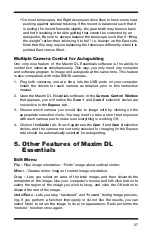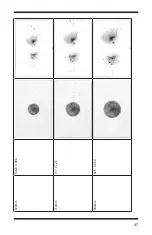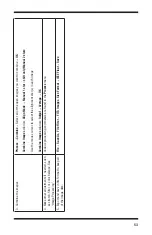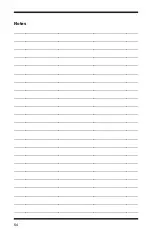
39
Arrange Icons
– Image windows can be minimized, at which point they
become small bars (icons). If these have become scattered about the main
application window, the
Arrange Icons
command will stack them neatly at the
bottom of the window.
Help Menu
Help Topics
– Click on this if you have any questions. This is an extensive
resource, and should be consulted often. Under the
Index
tab, type in “Help
Topics” and press Enter on your keyboard. This will give a primer on how to
most effectively use and access the Help files.
About MaxIm DL
– Gives the version number of the software.
Note: The
Open or Convert AVI File
command in the File menu is for the
StarShoot Solar System Imager, not he StarShoot Pro.
6. tips
Polar alignment
Good telescope mount polar alignment is of critical importance for long-expo-
sure CCD imaging. Inaccurate polar alignment leads to image movement over
time (even with motor drives running and engaged), which limits the amount of
time an exposure can be taken before the stars begin to streak and blur.
If your equatorial mount uses a polar axis finder scope, we highly recom-
mend utilizing it for polar alignment. If not, a technique known as the “drift
method” of polar alignment has been used for many years, and can achieve
an extremely accurate polar alignment. Unfortunately it is very time consum-
ing, since the drift of a star over time must be observed. The basic idea is to
let the telescope mount track while watching a star to see which way the star
drifts. Note the direction of the drift, and correct by moving the mount in the
appropriate direction.
To perform the drift method of polar alignment:
1. Do a rough polar alignment by pointing the R.A. axis of the mount at Polaris
(the North Star).
2. Find a bright star near the meridian (the imaginary line running north-to-
south through zenith) and near the celestial equator (zero degrees declina-
tion). Point the telescope at this star, and center it in an illuminated reticle
eyepiece (available from Orion). If you don’t have an illuminated reticle
eyepiece, use your highest- magnification eyepiece.
3. Determine which way is north and south in the eyepiece by moving the
telescope tube slightly north and south.
4. Now, let the mount’s motor drive run for about five minutes. The star will
begin to drift north or south. Ignore any east-to-west movement.






























